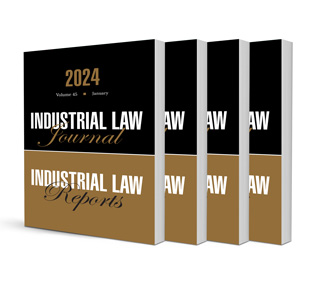Obstacles and Opportunities for Labour Dispute Resolution Using Videoconferencing Technology

Obstacles and Opportunities for Labour Dispute Resolution Using Videoconferencing Technology
Authors Nicci Whitear-Nel & Cecile de Villiers
ISSN: 2413-9874
Affiliations: Senior Lecturer, University of KwaZulu-Natal; Postdoctoral Fellow in Law, Stellenbosch University
Source: Industrial Law Journal, Volume 45 Issue 2, 2024, p. 663 – 691
https://doi.org/10.47348/ILJ/v45/i2a1
Abstract
While labour dispute resolution processes are typically conducted in person, rapid advances in technology coupled with the need for speedy, fair and accessible dispute resolution encourages the use of videoconferencing technology in such processes. This article considers the use of videoconferencing in dispute resolution processes by the Commission for Conciliation, Mediation and Arbitration (CCMA) and the Education Labour Relations Council (ELRC), a bargaining council operating in the public basic education sector. Although its use was primarily in response to the Covid-19 pandemic, the success of remote hearings has sparked a willingness to incorporate this approach permanently. We identify three advantages occasioned by the flexibility of remote processes. Firstly, hearings may be fully remote or in a hybrid format, increasing available options. Secondly, remote processes offer vulnerable witnesses greater protection and may increase the witness participation rate. Thirdly, they remove many logistical challenges associated with in-person processes and may reduce the number of postponements. Remote processes are, however, not without obstacles. We explore a number of objections to such processes, which are broadly divided into objections related to infrastructure (the digital divide, technological failures, power supply) and those related to procedural and testimonial integrity (the impact of remote processes on formality, representatives, interpreters and intermediaries, data privacy, document management and issues related to witness testimony). Although these are real obstacles to effective remote processes, we argue that the problems are not insurmountable and that remote labour dispute resolution holds benefits for both the CCMA (and bargaining councils) as well as its users.